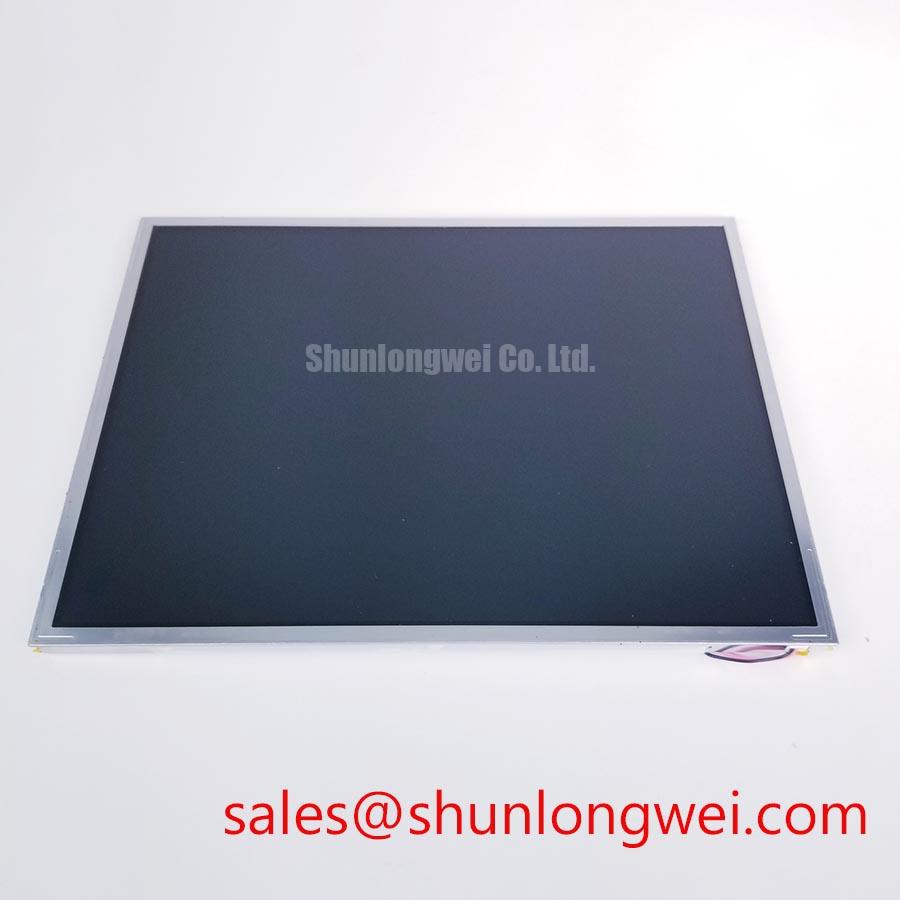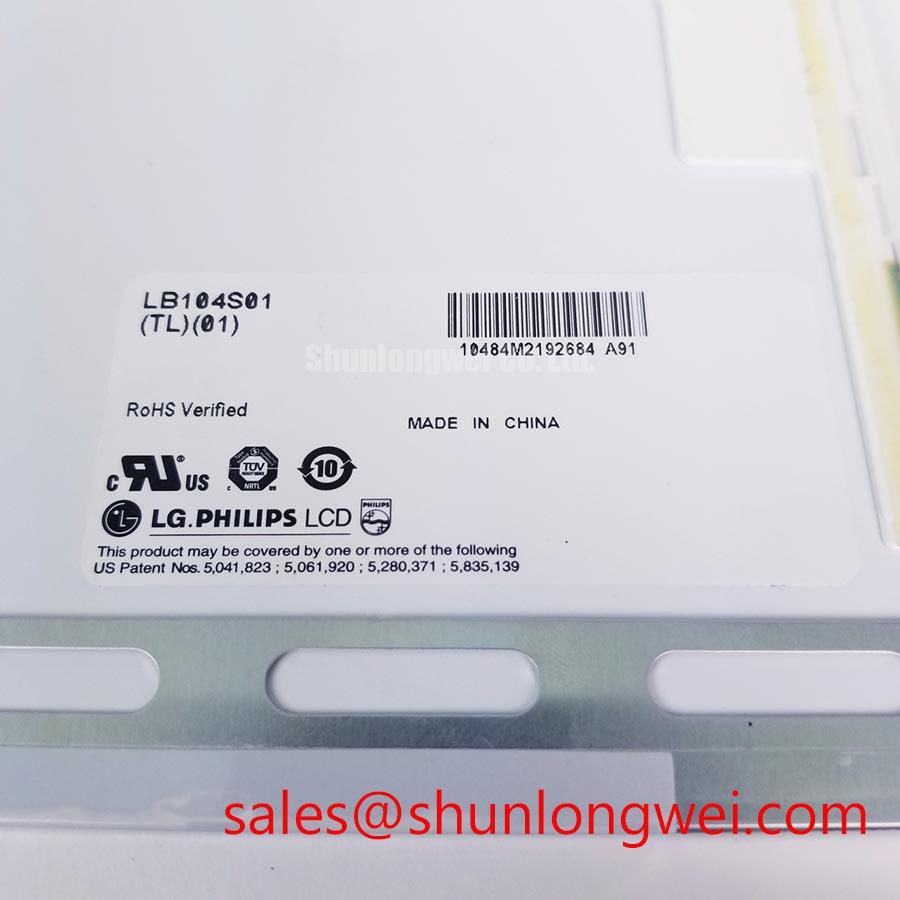Content last revised on November 19, 2025
LB104S01-TL01: A Robust 10.4-Inch SVGA Display Module Engineered for Industrial Integration
Introduction: Core Specifications and Engineering Value
The LB104S01-TL01 is a 10.4-inch a-Si TFT-LCD module designed for reliability and seamless integration into industrial human-machine interfaces (HMIs) and control systems. It delivers consistent visual performance through a combination of proven technology and robust physical design. Key specifications include: 800x600 SVGA Resolution | LVDS (1 ch, 6-bit) Interface | 250 cd/m² Brightness. The primary engineering benefits are enhanced operational readability in varied lighting and simplified system design cycles. This module directly addresses the need for a durable, easy-to-integrate display for factory automation and instrumentation. For industrial HMI systems requiring a proven, no-frills display with a standard interface, the LB104S01-TL01 offers a functionally optimized and reliable solution.
Application Scenarios & Value
System-Level Benefits in Industrial and Commercial Systems
The LB104S01-TL01 is best suited for applications where long-term operational stability and clear data presentation are paramount. Its SVGA (800x600) resolution is optimal for displaying graphical user interfaces, process schematics, and critical parameters in legacy and new industrial equipment without requiring significant processing overhead. A key engineering scenario involves the design of a control panel for factory automation machinery. In this environment, ambient lighting can vary drastically. The module's antiglare surface treatment is not a minor feature; it is critical for minimizing reflections that could otherwise obscure vital information, thus reducing operator error and improving safety. What is the primary benefit of its antiglare surface? It ensures consistent screen legibility under direct overhead factory lighting.
The standard 20-pin LVDS Interface further enhances its value by ensuring broad compatibility with a multitude of industrial motherboards and single-board computers, simplifying the electrical integration process and shortening development timelines. While the LB104S01-TL01 provides a solid foundation for many SVGA systems, for applications demanding higher pixel density and a wider viewing angle, the related G104XVN01.0 offers XGA resolution.
Key Parameter Overview
A Functional Breakdown of Core Specifications
The technical specifications of the LB104S01-TL01 are tailored for performance in demanding commercial and industrial environments. The parameters are grouped below by engineering function to facilitate a clear evaluation for system design.
| Functional Group | Parameter | Value |
| Display Characteristics | Screen Size | 10.4 inches diagonal |
| Resolution | 800(RGB) x 600, SVGA | |
| Aspect Ratio | 4:3 | |
| Display Technology | a-Si TFT-LCD, TN, Normally White | |
| Optical Performance | Surface Luminance | 250 cd/m² (Typ.) |
| Contrast Ratio | 400:1 (Typ.) | |
| Surface Treatment | Antiglare, Hard Coating (3H) | |
| Electrical Interface | Signal Interface | LVDS (1 channel, 6-bit) |
| Connector Type | 20-pins | |
| Logic Voltage (VCC) | 3.3V (Typ.) | |
| Mechanical & Environmental | Outline Dimensions (mm) | 224.5(H) x 172.0(V) x 5.7(D) (Typ.) |
| Operating Temperature (°C) | 0 ~ 50 °C |
Download the LB104S01-TL01 datasheet for detailed specifications and performance curves.
Technical Deep Dive
Analyzing the Impact of Antiglare Surface Treatment on Usability
A critical, yet often overlooked, specification for industrial displays is the surface treatment. The LB104S01-TL01 features an antiglare (AG) surface with a 3H hard coating. This is not merely a cosmetic finish; it is an engineered optical layer designed to diffuse ambient light rather than reflect it directly back at the operator. Think of the difference between a glossy photograph and one with a matte finish. The glossy photo shows sharp, mirror-like reflections of lights and windows, while the matte photo scatters the light, making the image underneath visible from more angles and under harsher lighting. The AG coating on this display functions like the matte finish, breaking up specular reflections from overhead lighting common in factories or control rooms. This directly enhances usability, reduces eye strain, and ensures that critical data is legible, contributing to a safer and more efficient human-machine interaction. This practical feature is a cornerstone of its suitability for its target applications. For a broader understanding of how different display technologies are used in industrial settings, see this guide to TFT-LCDs in industrial applications.
Frequently Asked Questions (FAQ)
Engineering-Focused Inquiries
What is the significance of the 6-bit color depth for typical industrial HMI applications?
A 6-bit color depth provides 262,144 distinct colors. For most industrial HMI applications, where the goal is to clearly differentiate status indicators (e.g., red for alarm, green for normal), display process schematics, and present data, this color palette is entirely sufficient. It allows for clear, unambiguous graphical interfaces without the higher data bandwidth and processing requirements of 8-bit or 10-bit color, aligning with the design principle of functional optimization for industrial systems.
How does the typical power consumption of around 3.55W influence system design?
The typical total power consumption of 3.55W (Typ.) is a key parameter for systems with thermal constraints, such as fanless industrial PCs or sealed NEMA enclosures. This moderate power draw simplifies thermal management, potentially reducing or eliminating the need for active cooling solutions like fans. This not only lowers the bill of materials (BOM) cost but also enhances system reliability by removing a mechanical point of failure, a crucial benefit detailed in guides for designing displays for heavy machinery.
To fully assess the LB104S01-TL01's suitability for your specific design, review the comprehensive datasheet and consider its balanced feature set in the context of your system's environmental and interface requirements.







